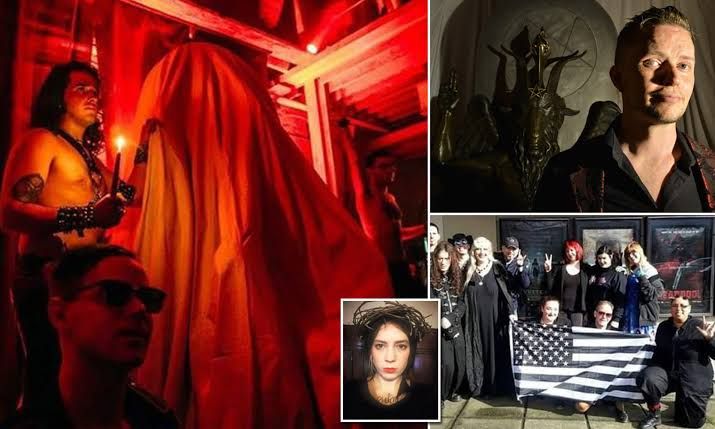The Evolution and Varieties of Satanism in America: From Rebellion to Modern Activism
Over the recent weekend, the city of Detroit became the host to a remarkable event - the unveiling of a statue erected by the Satanic Temple. Rather than a religious institution, the Satanic Temple represents a congregation of individuals who value human logic above all, as explained by the organizer,

Over the recent weekend, the city of Detroit became the host to a remarkable event - the unveiling of a statue erected by the Satanic Temple. Rather than a religious institution, the Satanic Temple represents a congregation of individuals who value human logic above all, as explained by the organizer, Jex Blackmore. One of the intentions behind the monument is to champion a "reconciliation of opposites," a statement particularly directed towards public displays of other faiths' monuments.
Satanism, contrary to popular belief, is far from a recent development. As far back as the 1970s, interest in the occult had grown so prevalent in American culture that TIME Magazine dedicated a cover story to the subject. The concept of "the Devil," as explored in this piece, precedes the Old Testament's invention of Satan. As Christianity evolved, the theology surrounding Satan also expanded, leading to increased power attributed to this figure in religious narratives.
During the Inquisition age, people faced with the oppressive establishment turned to the image of Satan, the embodiment of rebellion. This appeal towards the satanic messiah especially intensified during periods of despair, such as during the Black Death plague. Despite the Christian Church's efforts to quell Satanism, fascination for the occult persisted, evidenced by the tales of demonic rituals that beguiled the French aristocracy under Louis XIV and the renewed interest during the Victorian era.
In the United States, public and organized Satanism is relatively new, largely attributable to one man - Anton Szandor La Vey. He founded the Church of Satan in San Francisco in 1966 and authored The Satanic Bible in 1969. The Church of Satan, as described by TIME in 1972, was not the stereotypical frightening Satanism from religious imaginations. The church members used occult symbolism, but viewed Satan not as a supernatural entity, but a symbol of human ego. Rather than worshiping a supernatural being, they worshipped human self-gratification.
La Vey's church, with its organized structure, was established and protected under California law. Its followers, who were organized into local "grottoes," were surprisingly ordinary in their day-to-day lives. Their most striking contribution was their absolute dedication to human instinct, devoid of spirituality or self-sacrifice.
Despite the emergence of several other Satanism concepts in the 1960s and 70s - from religious belief to justifying criminal activities - the Church of Satan remained significant. Even after La Vey's death in 1997, the organization continues.
In contrast, the brand of Satanism displayed in Detroit represents a newer version: political Satanism. The New York-based Satanic Temple has made headlines by offering alternatives to mainstream religious practices, seeing Satan as a metaphor representing skepticism and the capacity to challenge authority.
The existence of two organizations claiming different purposes under Satanism underscores a point made by John M. Kincaid, the Church of Satan's minister of information in the mid-1970s. The appeal to mystery and rebellion, regardless of its form, is enduring. Even in this so-called enlightened age, the need to believe remains dominant, ensuring the presence of those who are skeptical as well.




